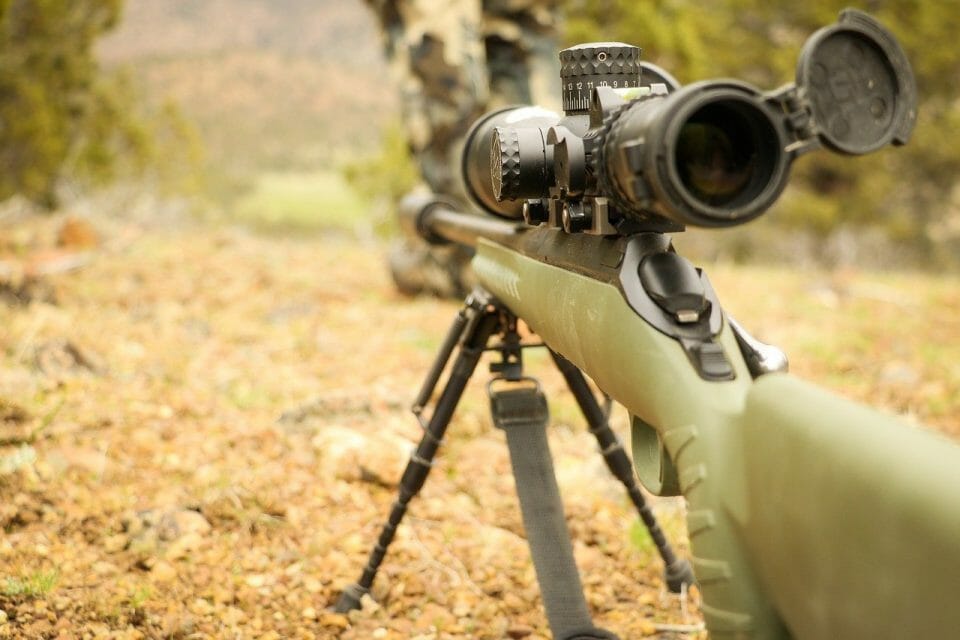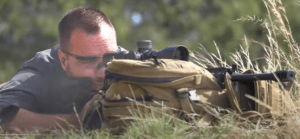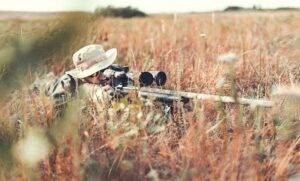
Some people choose the scope for their rifle the same way they decide where to go get a beer after work. When choosing the right rifle scope you need to put a little bit more thought into the selection. Here are 7 essential steps for making a more informed choice that will better justify the investment you make.
1. Consider Usage and Environment
The first consideration to have in mind when choosing the right rifle scope is to determine what you are going to use it for and where you are going to be using it. Certain types of scopes can be assets in some situations and liabilities in others. Extreme weather conditions, humidity, moisture, extreme temperatures are some of the environmental conditions to keep in mind as well. You are likely to be using your rifle for one or more of the following three reasons:
• Self-Defense: Most of these are close range encounters which require rapid target acquisition. Consider a reflex sight if your rifle is used in this way.
• Target and Competition Shooting: Scopes used for these can be a little bit more sensitive because babying and adjustments are possible beforehand or during the time they are being used.
• Hunting: When you are hammering around in the woods, your scope needs to stay tuned and ready to use. Different lighting and weatherproofing needs often come into play here as well.
2. Magnification Needs
When it comes to magnification, there are two numbers to consider. The first number or range of numbers has to do with the factor of magnification of the target. For example, a 3×30 scope magnifies the target by a factor of three or makes the target appear three times larger than you see it with the naked eye. There are two types of magnifications used:
• Fixed Magnification: When your rifle is used for primarily one type of usage, fixed magnification, especially at ranges of less than a couple hundred yards is adequate. A lower level fixed magnification prevents blurring of the target and allows for quicker target acquisition.
• Variable Magnification: Rifles that are used in a variety of different ways often benefit from variable magnification. A hunter might be at varying ranges from his game out in the field and need a higher magnification at great distances.
Keep in mind that variable magnification scopes tend to need more adjustments, tend to be heavier and tend to cost a good bit more than fixed magnification scopes. Unless you really need a variable scope, you will probably be happier with a quality fixed magnification scope.
3. OLD Needs
The second number associated with scope magnification has to do with objective lens diameter (OLD). OLD is the size of the glass at the leading end of the scope. This number determines how much light is allowed into the scope. The common OLD is 30 or 32, but 36, 40 and 50 can also be found. In general, higher magnification scopes need a larger OLD to provide the best experience. Keep in mind that higher OLD usually means higher cost as well, so consider this feature carefully if you are on a tight budget.
4. Eye Relief
Eye relief is the distance you hold your eye from the scope when you shoot. This is important because hitting yourself in the eye with your scope when you shoot is not only embarrassing, but can cause some serious damage. Common eye relief on most high-powered hunting rifles is 4”. On pistols and longer range “sniper” rifles, eye relief on scopes tend to be from 16” to 20”.
5. Parallax Problem
Most smaller scopes used for hunting and target shooting are parallax free. What this means is that the crosshairs in your scope stay in a fixed position even if you move your head or your eye slightly. When you are hunting, your breathing or heartbeat can effect parallax and make it next to impossible to make an accurate shot. Scopes that are not parallax free will have a parallax knob to help you dial in the distance and help fix your crosshairs.
6. Reticle Considerations
Reticles or the crosshairs of your scope come in a wide variety of configurations. In general, unless you fully understand and know how to use other types of reticles, stick to the classic “duplex” reticle or crosshairs type. There are a couple of features that you might consider in your reticle that can add value to your accuracy.
• Mil-dots: This is a dotted crosshair that helps you determine distance and size of the target.
• BDC: This is a Bullet Drop Compensator, which is a series of lines which help you judge bullet drop at various distances to target.
7. Adjustments
Since there isn’t a scope made that can be taken out of the box and used immediately, you will need to become familiar how to make adjustments right away. Basically, there are two systems and each has its own quirks to keep in mind.
• MOA: 1 MOA corresponds to 1 inch when shooting at 100 yards. If you miss by 1 inch at 100 yards, you can adjust with 1 click. This is the most common type, which often includes ½ MOA adjustment as well.
• MRAD: More complicated scopes will use this. 1 MRAD is 3.6 inches at 100 yards. These scopes are often favored by long-range shooters, but they are bulky and expensive.
Unless you know exactly what you are doing, you are better off to stick to the MOA adjustment. One more consideration to keep in mind when it comes to adjustments is to consider lower profile adjustment knobs on hunting rifles because they are less likely to be bumped and knocked out of adjustment when you are navigating rugged terrain.
Conclusion
Following these 7 essential steps for choosing the right rifle scope will increase the level of satisfaction you have with the scope you choose as well as justify the investment you make into it. Keep these steps in mind as you consider the purchase of your next rifle scope. Please include any questions, comments or additional tips in the section below.










